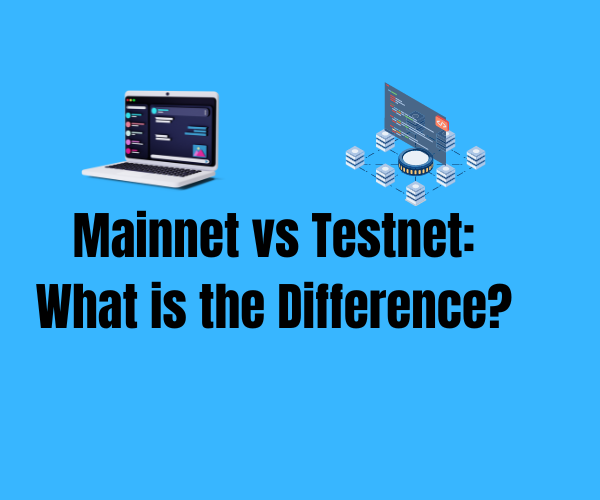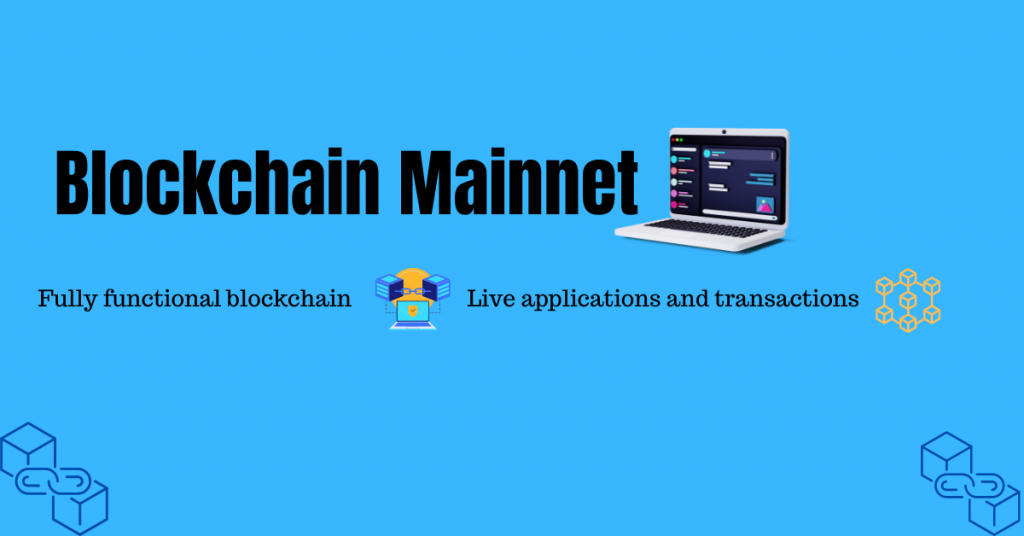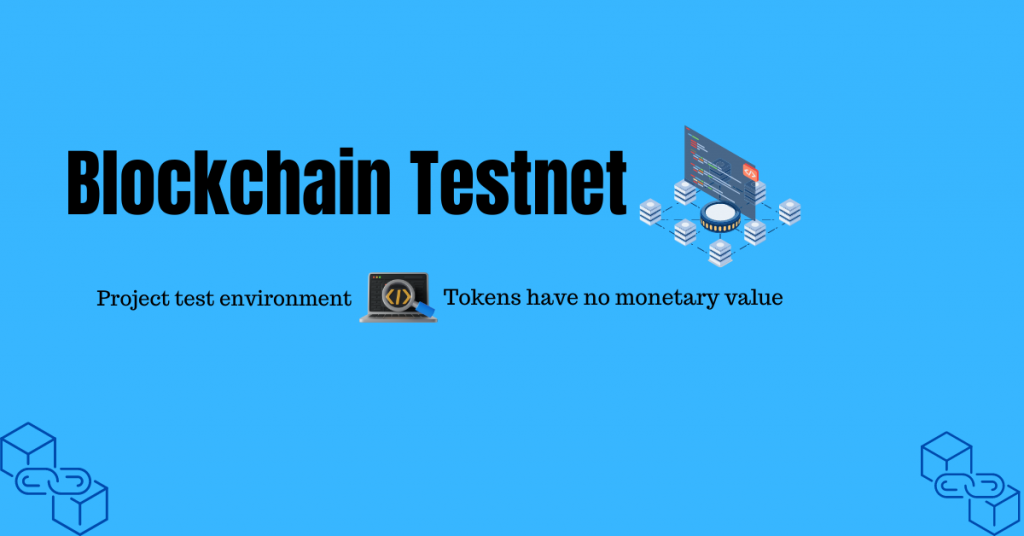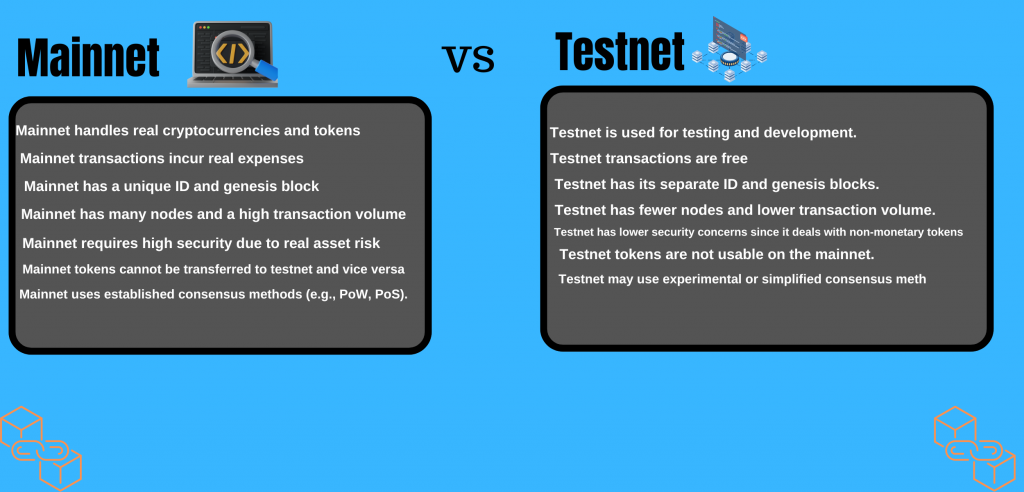
The cryptocurrency world is filled with several digital finance terms and community jargon, which can be overwhelming for newcomers. Among these terms, “mainnet” and “testnet” are commonly encountered, each representing different stages in the blockchain lifecycle.
In this article, we’ll take a closer look at what mainnets and testnets are, how they function, and their fundamental differences in the blockchain ecosystem. Let’s dive in.
Introduction to Mainnet and Testnet in Blockchain
A mainnet is a fully operational blockchain version that manages real-world transactions and applications. However, a testnet is used for testing and development, allowing developers to experiment with new features without tampering with the mainnet.
Register for Tekedia Mini-MBA edition 19 (Feb 9 – May 2, 2026): big discounts for early bird.
Tekedia AI in Business Masterclass opens registrations.
Join Tekedia Capital Syndicate and co-invest in great global startups.
Register for Tekedia AI Lab: From Technical Design to Deployment (next edition begins Jan 24 2026).
What is Mainnet in Crypto?
A mainnet is a fully functional blockchain network in which digital assets are exchanged, and smart contracts are executed as planned. It is the live environment in which cryptocurrencies have real value and all transactions are recorded on an immutable ledger. This means that a transaction cannot be altered or erased once it has been recorded, ensuring transparency and trust.
How Does Mainnet Work?

The network nodes use consensus techniques such as Proof of Work (PoW) or Proof of Stake (PoS) to validate and process transactions. After that, blocks consisting of transactions are added to the blockchain. Additionally, network upgrades are carried out through soft or hard forks, while security is preserved through decentralization and cryptographic techniques.
What is the Purpose of Mainnet?
Mainnet manages real-life applications and performs real-time transactions on the blockchain. It also serves specific purposes that contribute to the growth of blockchain. Below are some of the benefits of Mainnet:
Operational Transaction
The mainnet is a live network where real-time transactions take place. While the testnet is used for network testing, actual exchanges of digital assets and currency take place on the mainnet. Users can transfer money and exchange assets in a real-world environment, proving the theoretical worth of the blockchain through practical application.
Deployment of Functional Smart Contracts
On the mainnet, smart contracts’ self-executing agreements are fully operational. These contracts execute automatically according to the agreed terms, supporting various applications from financial services to logistics and supply chain management. This automation improves efficiency and reduces reliance on intermediaries.
Security and Integrity
Mainnet uses consensus methods and sophisticated security measures to verify transactions and protect the network. Consensus mechanisms such as Proof of Work (PoW) and Proof of Stake (PoS) guarantee transaction verification and network agreement on the blockchain’s state. This improves the blockchain’s security and trustworthiness.
Increased Value and Trust
The transition from a testnet to a mainnet signifies a project’s readiness and reliability. Mainnet launches often result in token increases, reflecting the blockchain’s operational stability and full deployment. This shift increases investor and user confidence in the project’s long-term viability.
Fosters Development and Innovation
The mainnet offers a reliable and feature-rich platform for creating decentralized apps (dApps) and incorporating blockchain technology into several industries. It promotes continuous creativity by providing a conducive environment for both emerging and existing blockchain-based solutions to function properly.
What is a Testnet in Crypto?
A testnet is a blockchain network created for testing and development before the solution goes live on the mainnet. Since it mimics the mainnet, developers can test apps and smart contracts without the risk of losing money.
How Does Testnet Work?

Testnet uses tokens with no monetary value to identify and correct errors in a risk-free environment. Before changes are released onto the mainnet, they can be tested in this controlled environment to ensure that they are secure and stable. It is a simulation environment where developers may improve and verify their project’s operation.
What is the Purpose of Testnet in Crypto?
Testnet is an essential testing phase in crypto that contributes to the growth and scalability of blockchain. Below are some of the benefits of a testnet:
Risk-Free Testing and Experimentation
Testnet offers a controlled environment where developers can experiment with smart contracts, decentralized apps (dApps), and new features without risking real assets. Since testnet tokens are unusable in the real world, developers may experiment with code, identify bugs, and improve functionality without worrying about losing money. This low-risk environment promotes creativity and enables extensive testing before releasing updates to the mainnet.
Safe for Mainnet Integrity
Developers can test and create new features and protocols on a testnet without affecting the mainnet.
Since experimentation on the mainnet may interfere with its stability and result in network downtime, the testnet helps to replicate the mainnet environment, without impacting the live blockchain. This maintains the network’s dependability and efficiency.
Cost-Efficient Development
Testing a network on the mainnet might be costly due to the usage of real cryptocurrency for transactions. However, the testnet provides a platform where developers and users can conduct transactions using free tokens. This reduces expenses for developers who need to experiment and iterate on their projects extensively without exceeding their budget.
Facilitates Continuous Improvement
As blockchain technology advances, with ongoing research addressing scalability, security, and functionality, a testnet plays a vital role in the process. It provides developers with a sandbox environment to test new protocol updates, modify smart contracts, and explore other innovations. Blockchain capabilities can be improved through this iterative process, enabling small, controlled upgrades before mainnet deployment.
Educational Tool for Users and Developers
Testnet serves as an educational resource for both new developers and users. It offers a risk-free environment for learning about blockchain technology, testing with smart contracts, and understanding how dApps operate. Developers can practice their skills and test their apps in a safe environment, while users can perform transactions and interact with various blockchain features without financial risk.
What is the Difference Between Mainnet and Testnet?

Although mainnet and testnet play essential roles in product efficiency and blockchain scalability, they differ across several aspects. Below are some of the differences between mainnet and testnet.
Purpose and Utilization
The mainnet is a fully functional blockchain network where smart contracts are executed. It deals with real cryptocurrencies or tokens with a finite amount of supply. In contrast, the testnet is a distinct blockchain environment designed for testing and development. Developers may test out new features and make enhancements without having to risk real currency.
Operational Costs
Since tokens on the mainnet have actual value, every operation and transaction incurs expenses. For instance, Ethereum gas fees are paid in ETH. However, the digital currencies used on the testnet are solely for testing and have no monetary value. Due to zero financial repercussions, this makes the testnet an ideal environment for extended testing and iterative development.
Genesis Blocks and Network ID
Every blockchain network is identified by a mainnet ID that distinguishes it from other networks, and each possesses a genesis block referring to the nascent stage of the network. Ethereum, for instance, has a mainnet ID of 1 and a unique genesis block that marks the start of its blockchain.
Additionally, a testnet has unique genesis blocks and network IDs. For example, the network IDs of Rinkeby and Ropsten testnets are 4 and 3, respectively. These identities and genesis blocks aid in identifying different blockchain environments to ensure accurate network identification and initialization.
Nodes and Transaction Frequency
The mainnet features numerous nodes distributed across the globe, working together to process and validate transactions. This widespread network supports a high frequency of transactions, reflecting its role in handling real-world financial activities. In comparison, the testnet has fewer nodes and handles a lower volume of transactions. This reduced scale indicates their purpose as testing grounds rather than active financial networks.
Security and Impact
Security is important on the mainnet since it uses real assets for transactions. Mainnet employs stringent security measures, including encryption, multi-signature transactions, and detailed smart contract audits to safeguard user funds and maintain network integrity. Any vulnerabilities or issues on the mainnet can lead to significant consequences, such as financial losses. Although testnet also focuses on security, it operates with a different set of priorities since the stakes are lower. The security protocols on testnet are designed to ensure safe experimentation without the risk of impacting real assets.
Token Transferability
Tokens from the mainnet cannot be moved to the testnet, and vice versa. For instance, since real Bitcoin or ETH are not accepted in the testnet ecosystem, transferring them from the mainnet to a testnet address will result in token loss. Additionally, tokens obtained via the testnet are not usable on the mainnet. However, once they have been verified and are prepared for deployment, apps and smart contracts that have been developed and tested on a testnet can be transferred to the mainnet.
Consensus Mechanism
Mainnet relies on existing consensus methods to guarantee network security and transaction validation. For instance, Proof of Work (PoW) is utilized on the Bitcoin mainnet, while Proof of Stake (PoS) is employed on Ethereum. Although consensus approaches are utilized on the testnet, it is frequently in an abridged or experimental form.
FAQs
Here are a few frequently asked questions with suitable responses:
Is the Money on Testnet Real?
Testnet is solely for testing network and dApp operations. It has no real-world value and is only usable within the test environment.
How do I Fund Testnets?
Testnet funds are accessible on the faucet. Several blockchains have a faucet where users and developers can obtain free tokens for testing purposes. Some popular testnet faucets are the Goerli faucet, Sepolia faucet, Polygon Mumbai faucet, Chainlink faucet, and Avalanche Fuji faucet.
What is the Best Wallet for Testnet?
While there are several efficient wallets for blockchain testnet, some popular wallets, such as Metamask, Phantom, and Keplr wallet allow users to navigate between the testnet and mainnet environment within the same wallet.
What Happens After Testnet?
After the testing phase of a network or a blockchain product, the mainnet launch occurs at the end of the development cycle. This allows the deployment of smart contracts and facilitates real-time transactions.
What Is a Tesnet Airdrop?
A testnet airdrop is a token reward given to users who help projects test their blockchain or product before it goes live.
What is a Mainnet Airdrop?
A mainnet airdrop is a reward or token incentive distributed to users for engaging with a live blockchain or product, often as part of promotional campaigns or to encourage network participation.
Final Thoughts
In conclusion, mainnet and testnet play key roles in blockchain technology. Mainnet is a live network where real transactions happen, and cryptocurrencies have actual value. It handles everyday operations and ensures everything works securely. Testnet, on the other hand, is used for testing new networks and dApps without financial risk. It uses free test tokens and allows developers to try out new features in a safe, controlled environment. This way, bugs and other issues are easily resolved before anything goes live on the mainnet.
Disclaimer: Kindly note that this article is solely for educational purposes and should not be considered as a piece of financial advice.



